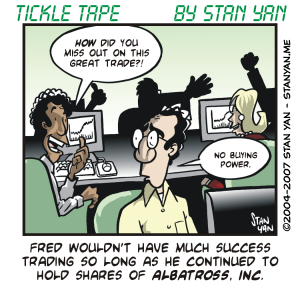How often have you stared at a Level II screen and/or a five-minute chart of the stock you are trading—and your heart leapt or sank with every tick up, or down? Maybe, in the midst of a winning trade, you slapped yourself on the back and shouted, “I’m a genius.” Or, perhaps as you watched a stock fall past your protective stop and tumble to depths unknown, you muttered, “I am so-ooo stupid.”
While fluctuating emotions are certainly human reactions—especially when tied to hard-earned money gained or lost—they can colour perception of market action and even serve as the impetus for major trading mistakes.
If you have committed to trading as a full-time, or even part-time, income source, you know that volatility is part of the game. Indeed, traders make much of their profits when markets reverse, trends change and the about-face in supply and demand imbalance provides price momentum and velocity.
But to the novice or inexperienced trader, it’s during these chaotic market conditions that emotions are most volatile, rapidly moving between fear and greed, or elation and disappointment. Skilled traders know how to control these emotions. How do they do it? The skilled trader manages his or her trade with no attachment to the outcome. When the stock falls to the protective stop, the position is closed immediately, and with a shrug.
Small, controlled losses are expected. Or perhaps the stock moves neatly up to the profit target. The skilled trader assesses the price movement and either close all or part of the position or even adds to it while raising the stop-loss. Either way, the seasoned trader has planned the trade and is trading the plan with controlled emotions and calm, detached confidence that supports consistency and success.


